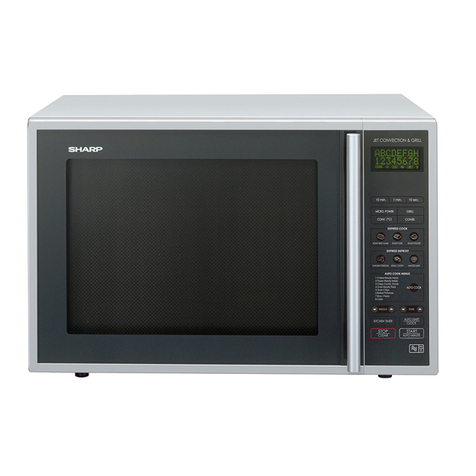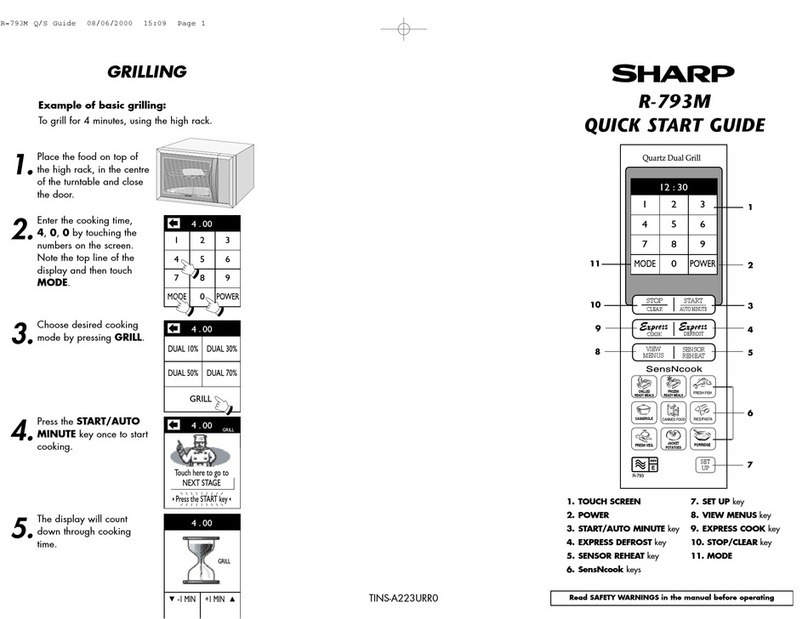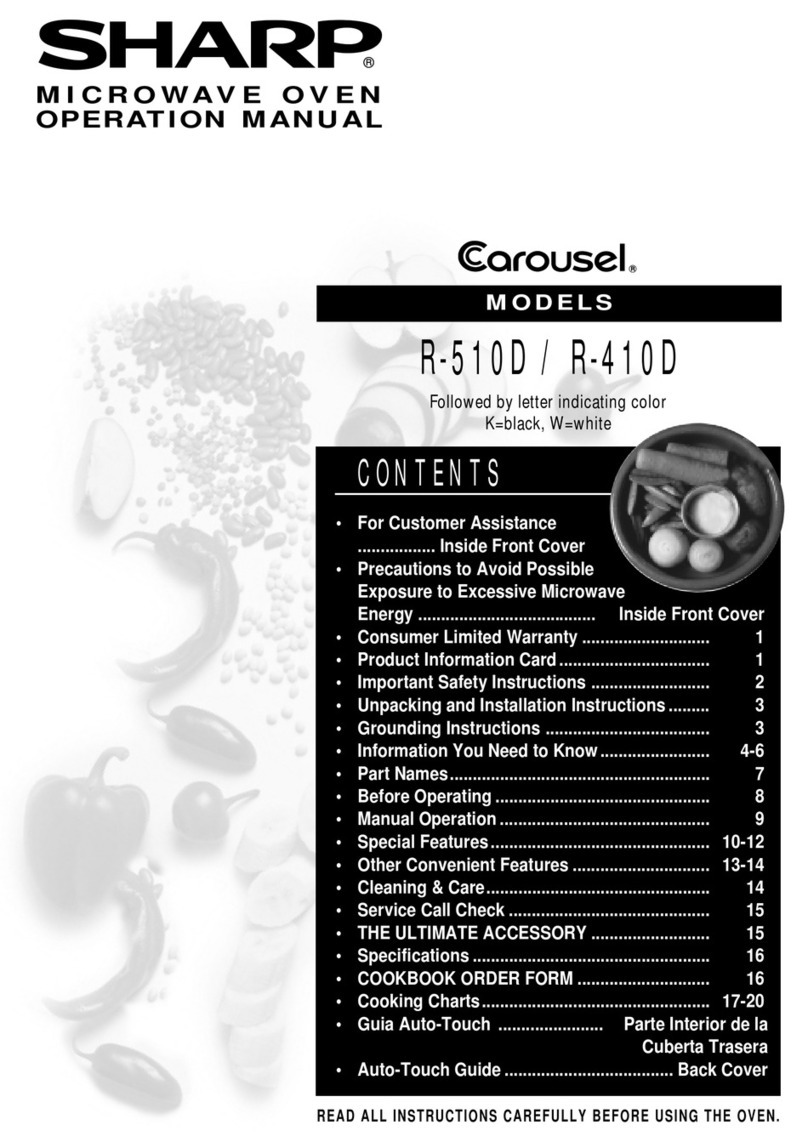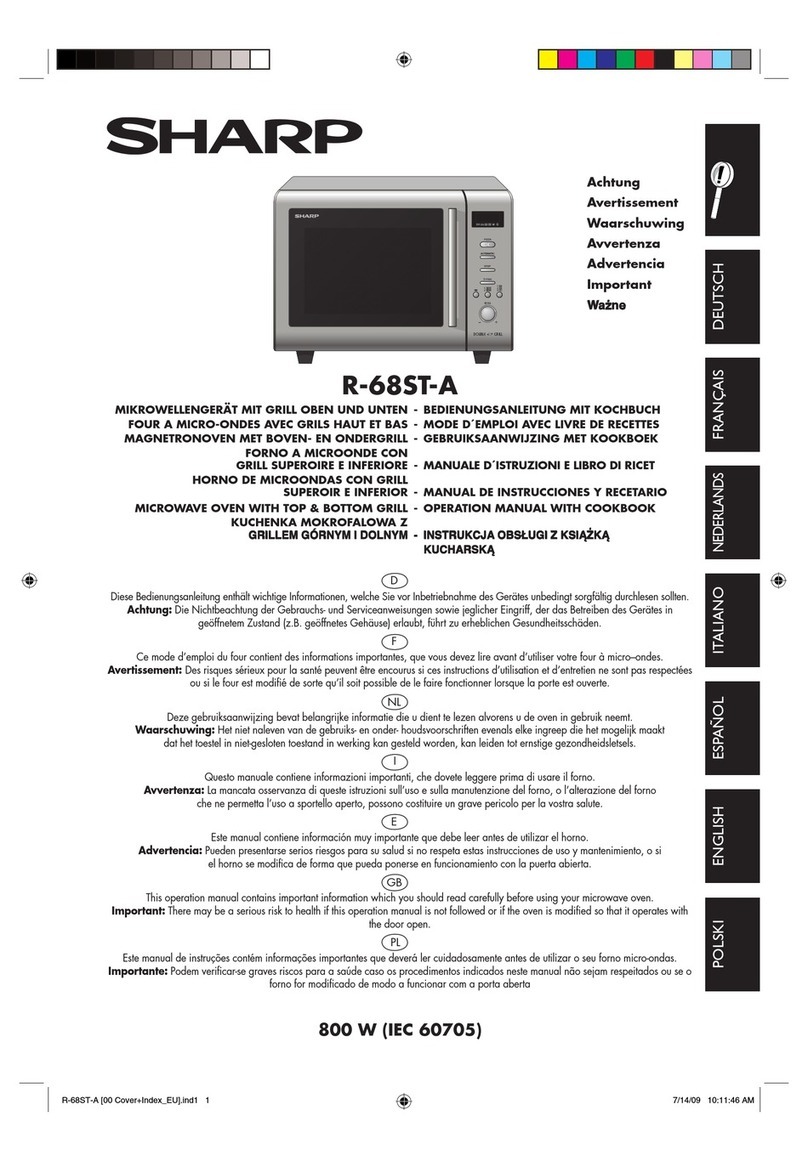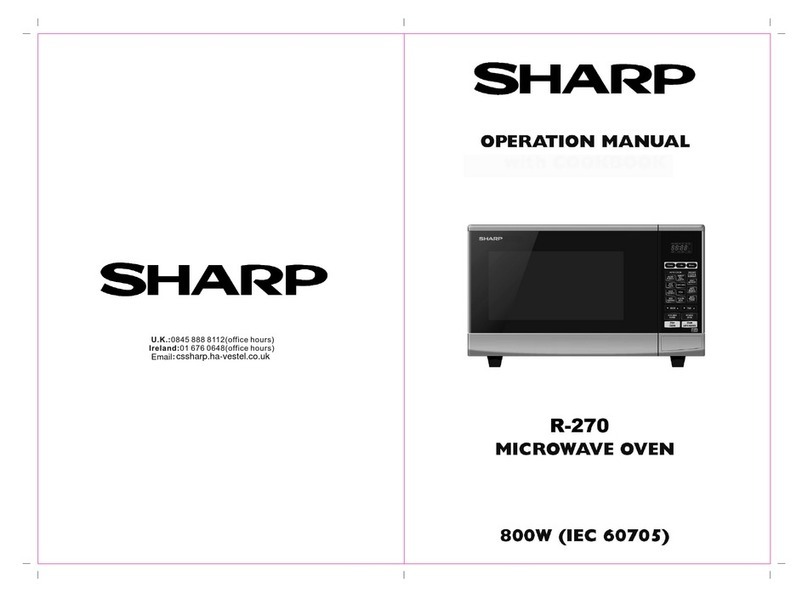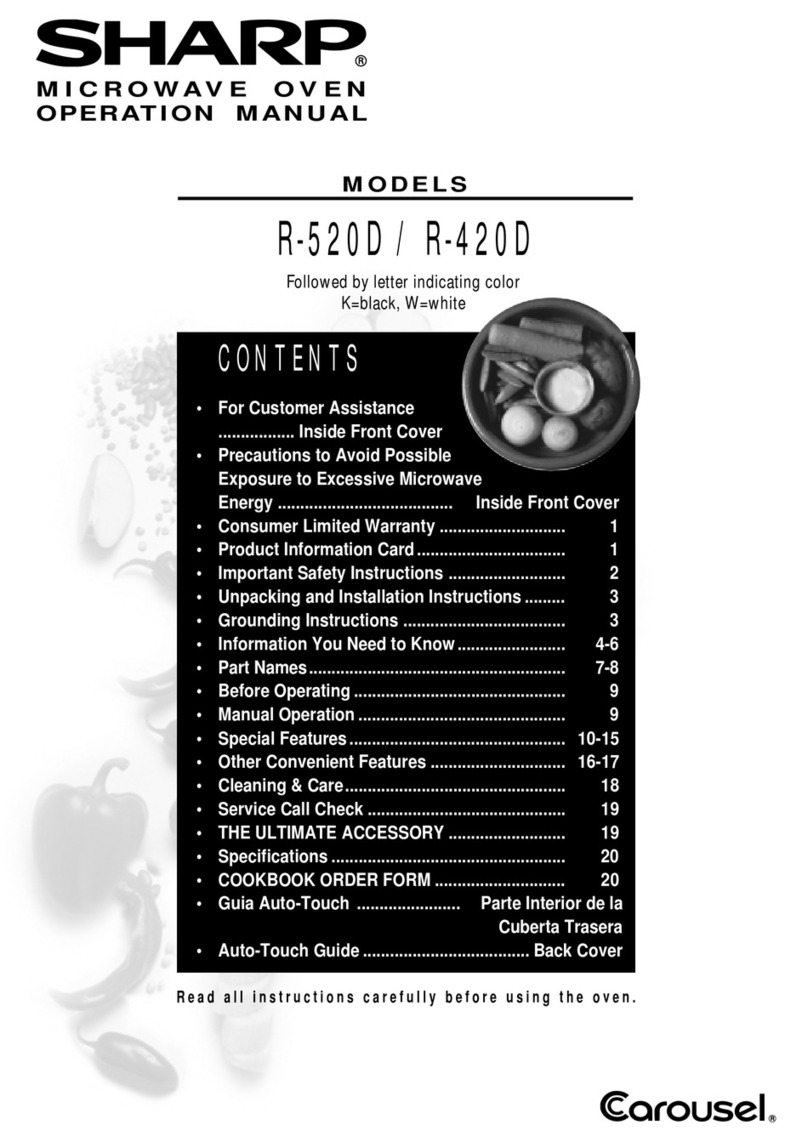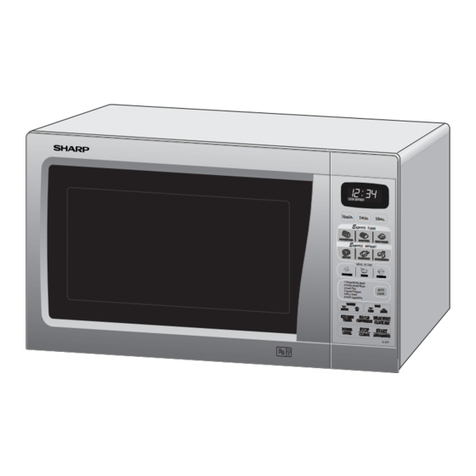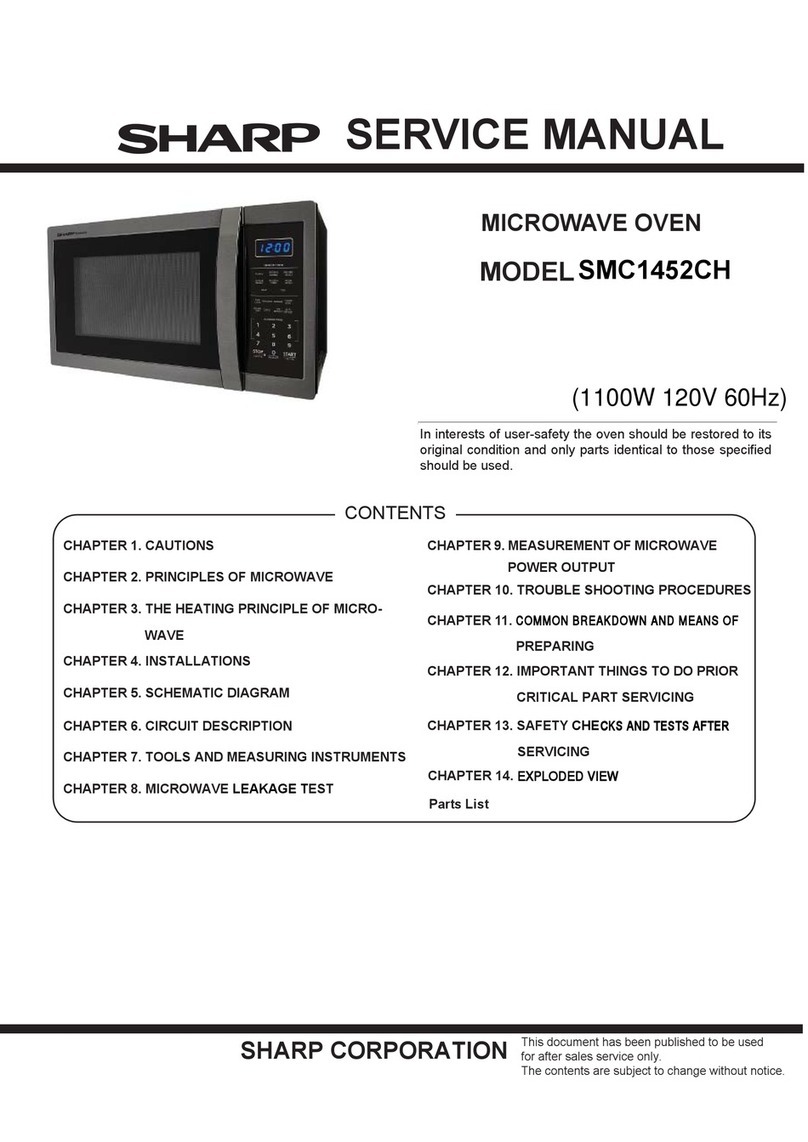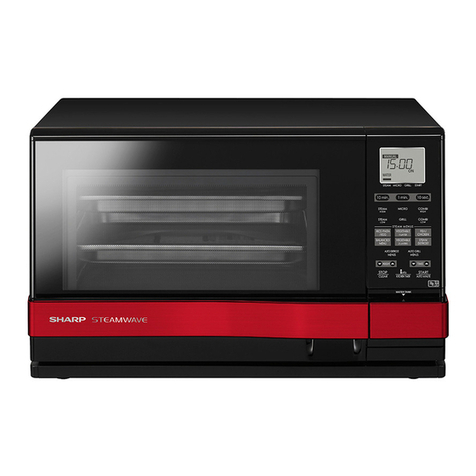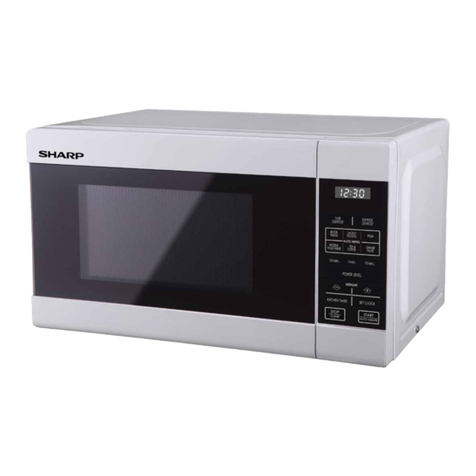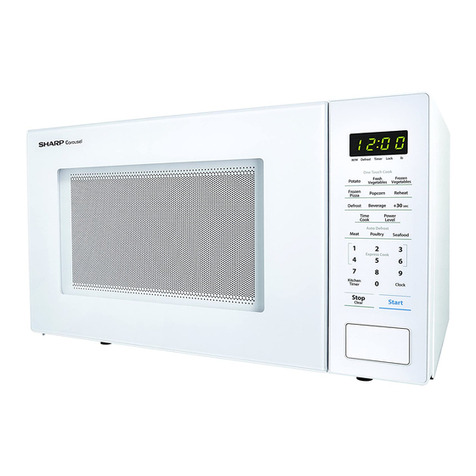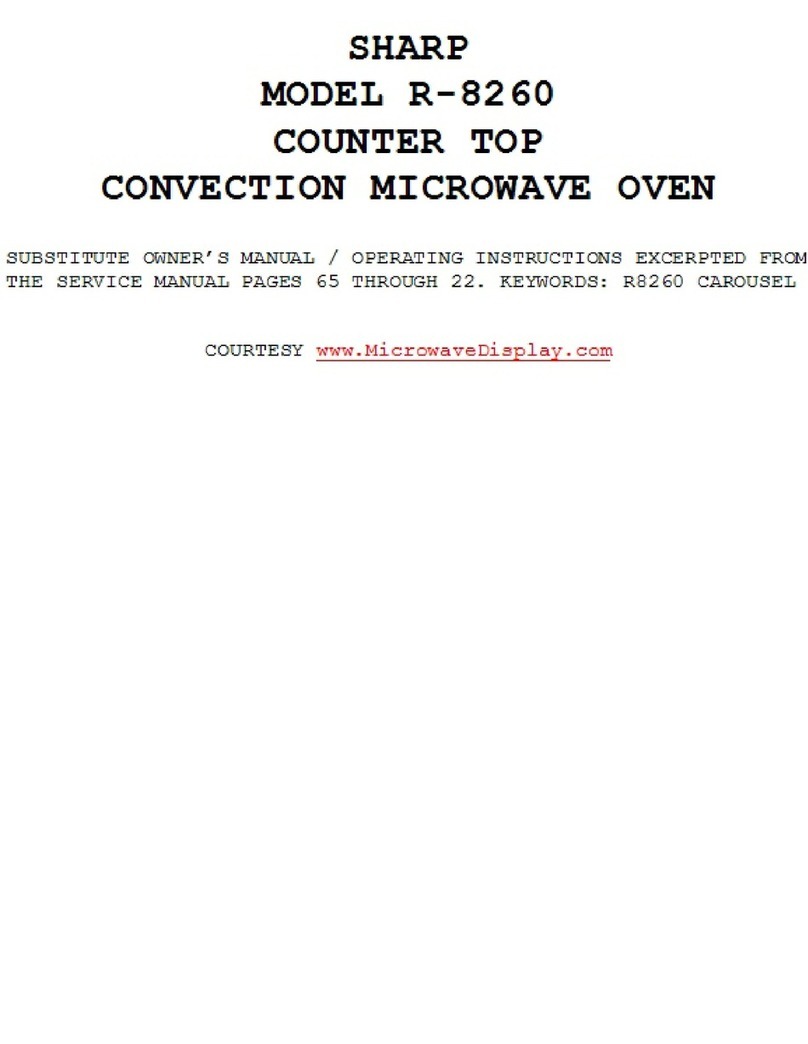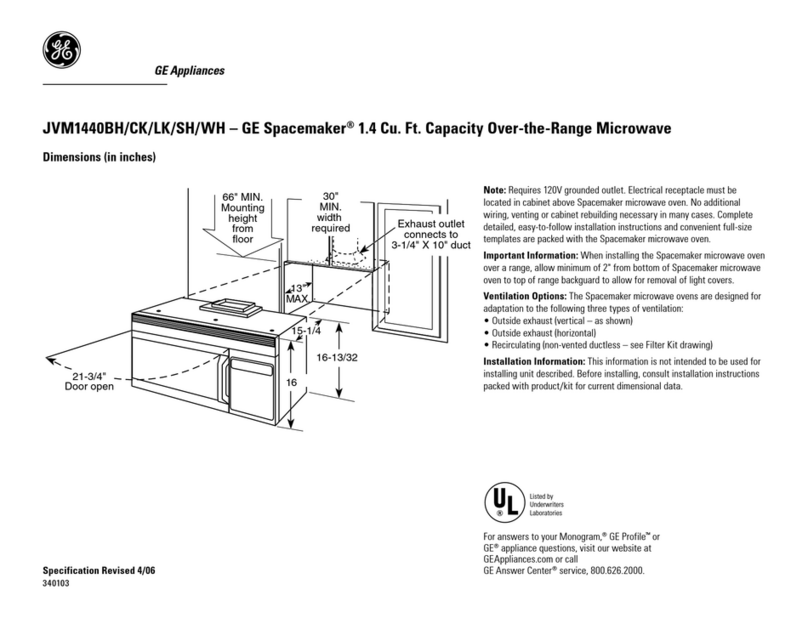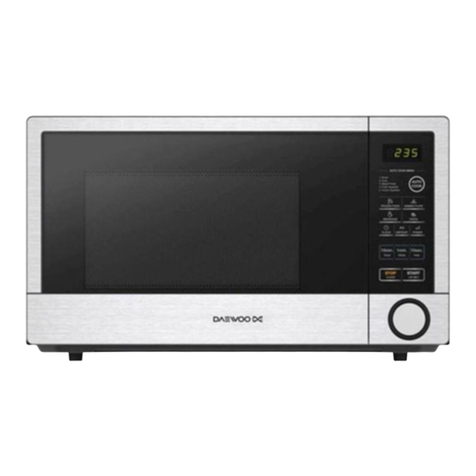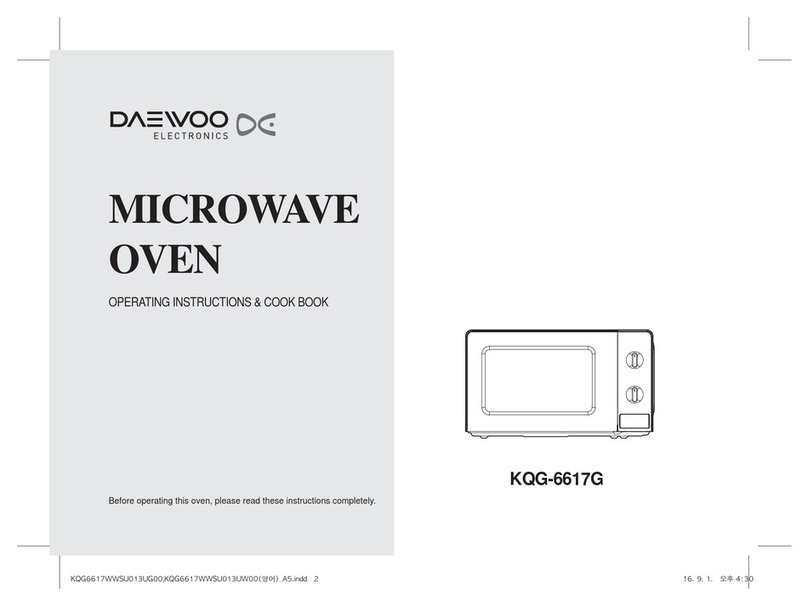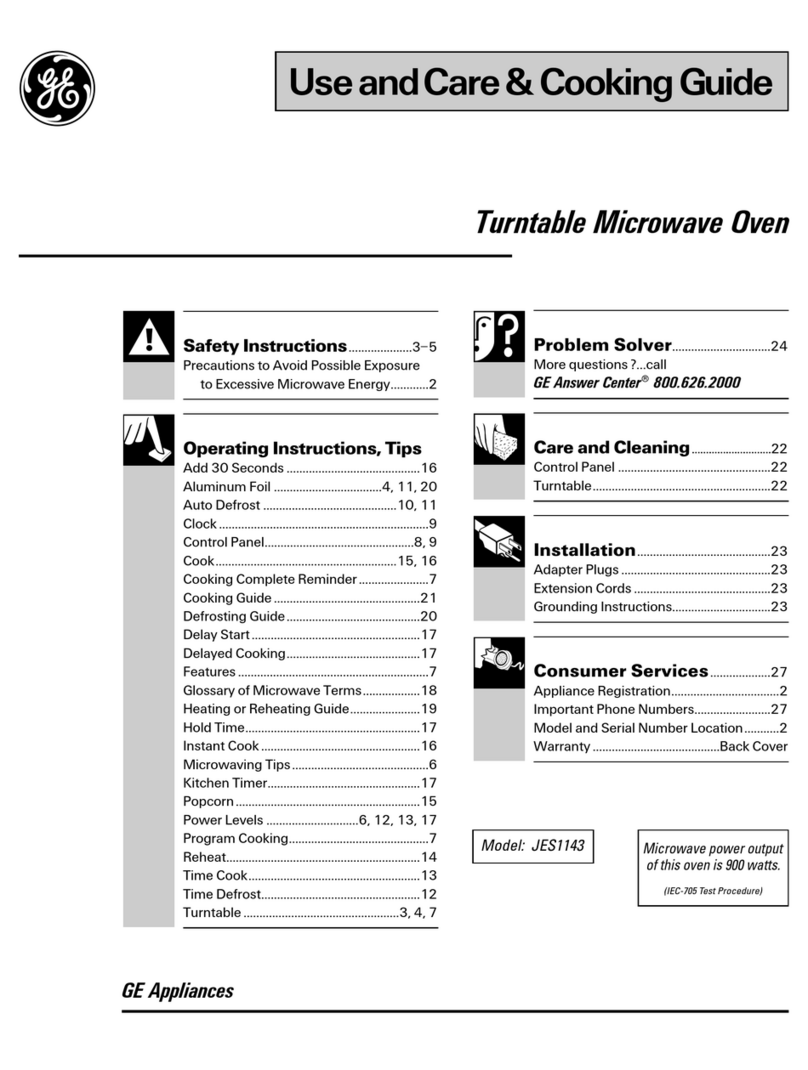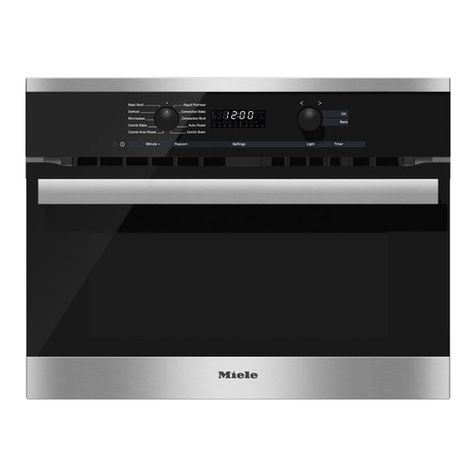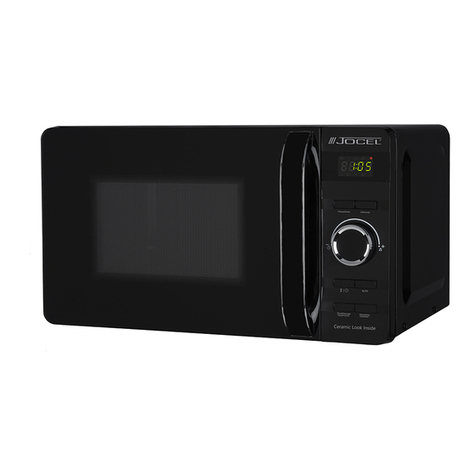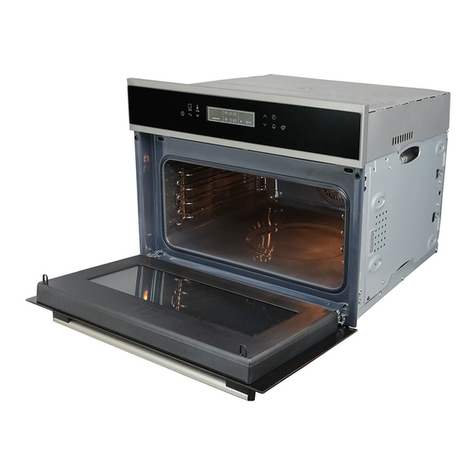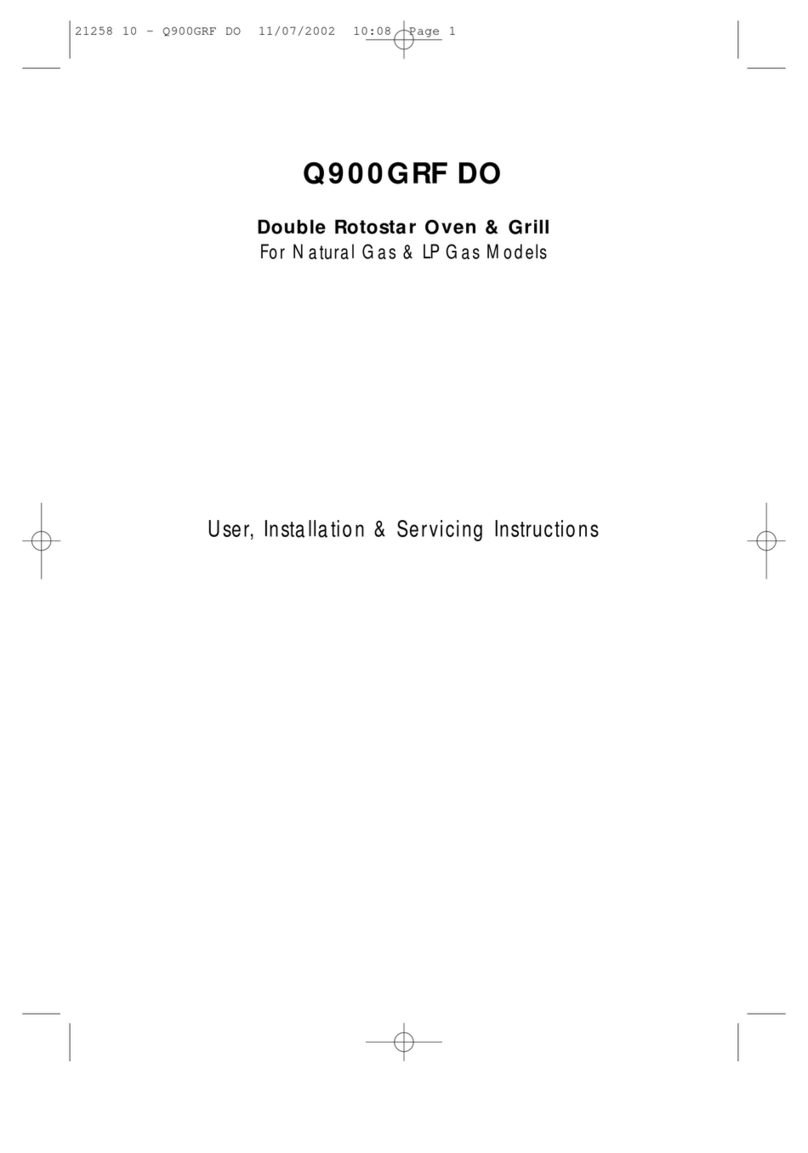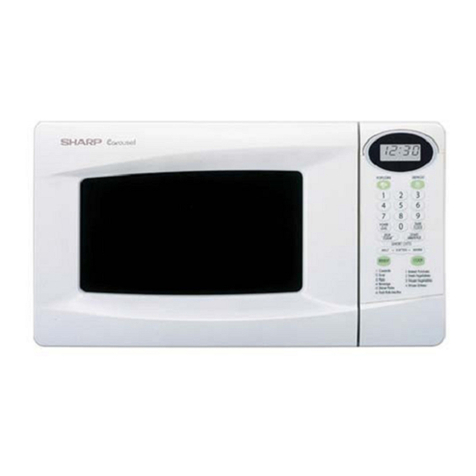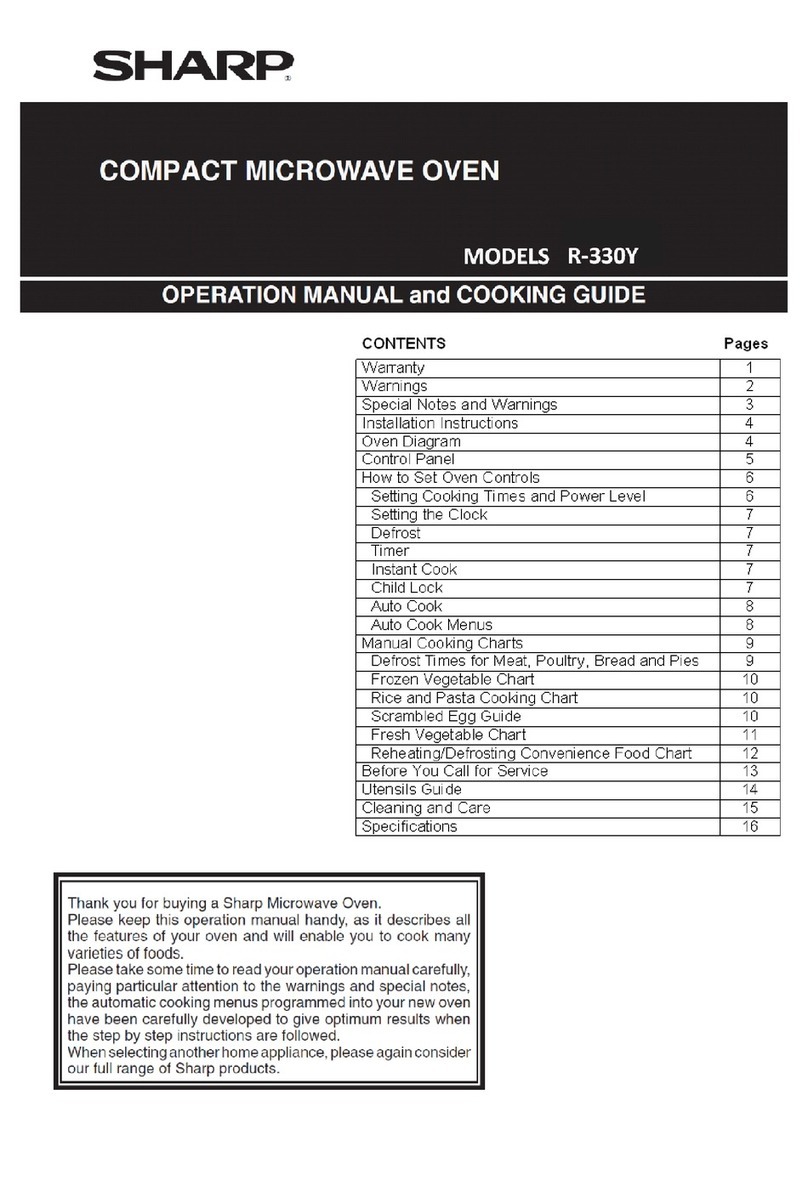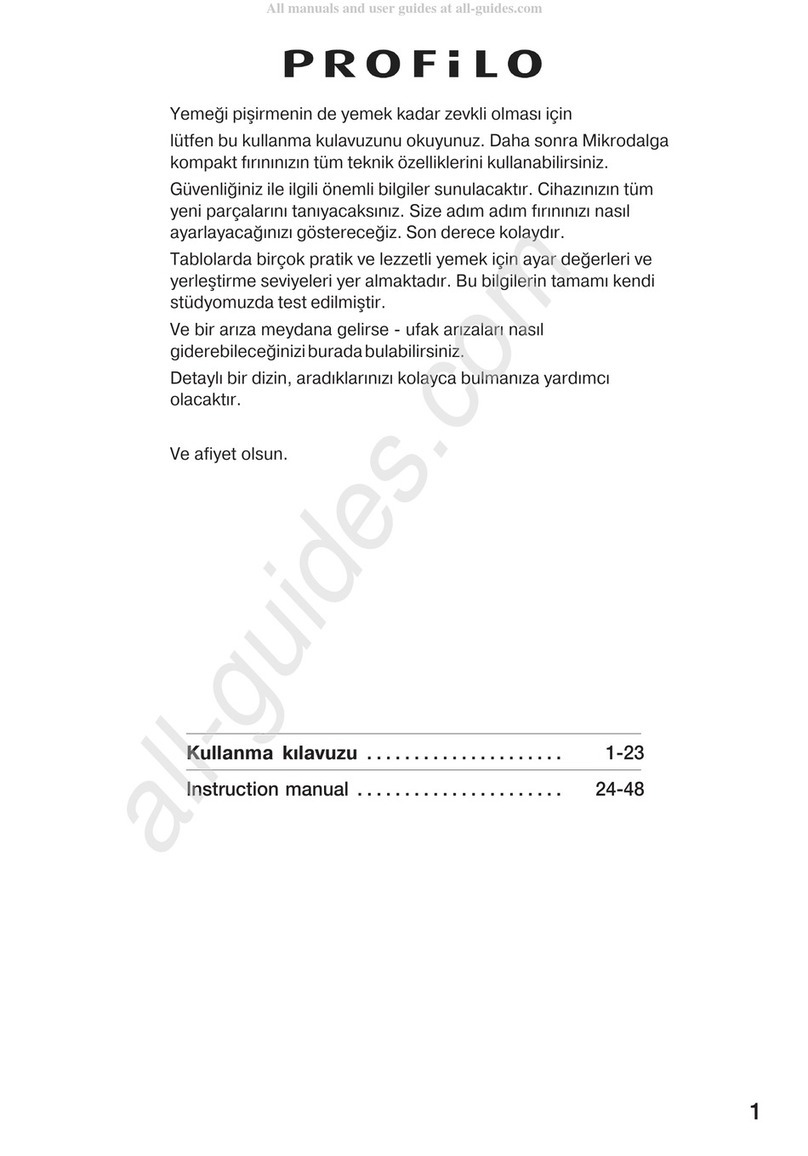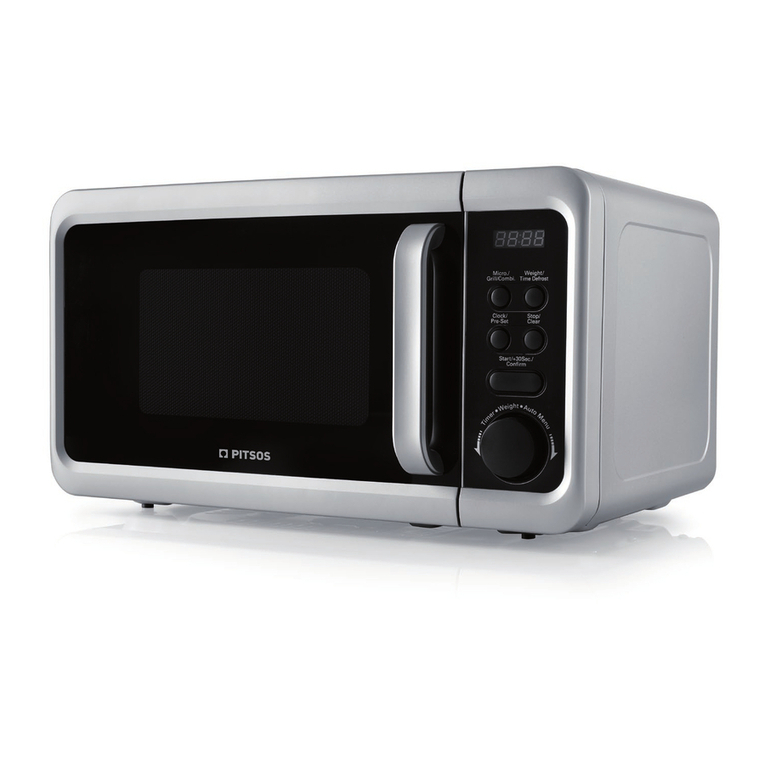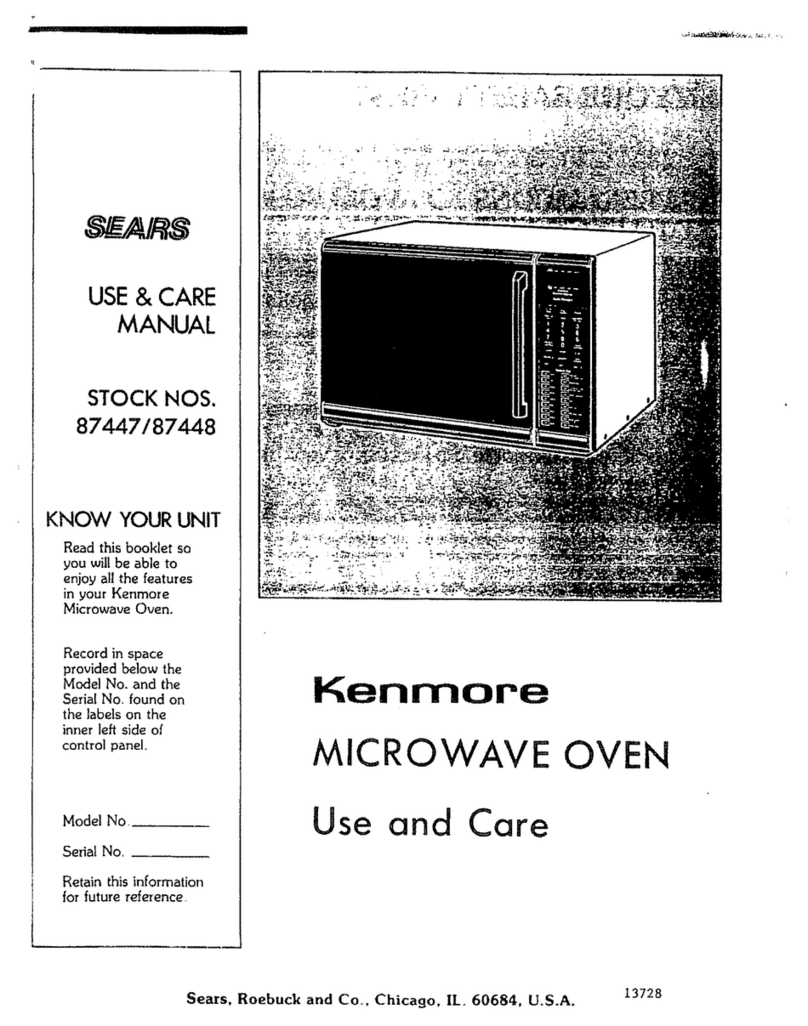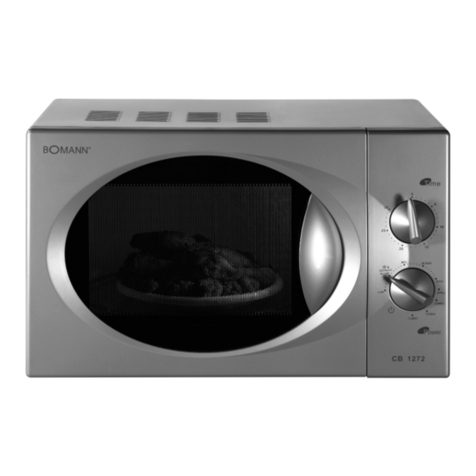
R-21HT
R-21HV
8
DESCRIPTION AND FUNCTION OF COMPONENTS
DOOR OPEN MECHANISM
The door is opened by grasping the door handle, refer to
Figure D-1.
When the door handle is grasped, the handle lever is
pulled. And then the upper and lower latch heads are
moved upward by the handle lever, and they are released
from the latch hook. Now the door will open.
Figure D-1. Door Open Mechanism
DOOR SENSING AND SECONDARY INTERLOCK
SWITCHES
The secondary interlock switch is mounted in the upper
positionofthelatchhookand the doorsensing switchinthe
primaryinterlock systemis mountedin thelower positionof
the latch hook. The secondary interlock switch is activated
by the latch switch lever A. The latch switch lever A is
activated by the upper latch head. The door sensing switch
is activated by the latch switch lever C. The latch switch
lever C is activated by the lower latch head. When the door
is opened, the switches interrupt the power to all high
voltage components. A cook cycle cannot take place until
the door is firmly closed thereby activating both interlock
switches.The primaryinterlock systemconsists of thedoor
sensing switch and primary interlock relay located on the
control circuit board.
MONITOR SWITCH
Themonitorswitchisactivated(thecontactsopened)bythe
latch switch lever B on the latch hook while the door is
closed. The latch switch lever B is activated by the lower
latch head. The switch is intended to render the oven
inoperative,bymeansofblowingthemonitorfuse,whenthe
contactsoftheprimaryinterlockrelay(RY2)andsecondary
interlock switch fail to open when the door is opened.
Functions:
1. When the door is opened, the monitor switch contacts
close (to the ON condition) due to their being normally
closed.Atthistimetheprimaryinterlockrelay(RY2)and
secondary interlock switch are in the OFF condition
(contactsopen)duetotheirbeingnormallyopencontact
switches.
2. Asthe door goes toaclosedposition,themonitorswitch
contacts are first opened and then the door sensing
switchandthesecondaryinterlockswitchcontactsclose.
(On opening the door, each of these switches operate
inversely.)
Latch Hook
Latch Switch
Lever A
Latch Switch
Lever B
Latch Switch
Lever C
Latch Head
Latch Head
Handle
Lever
Door
Handle
Latch
Lever Secondary
Interlock
Switch
Monitor
Switch
Door
Sensing
Switch
3. If the door is opened, and the primary interlock relay
(RY2) and secondary interlock switch contacts fail to
open,themonitorfuseblowssimultaneouslywithclosing
of the monitor switch contacts.
CAUTION: BEFORE REPLACING A BLOWN MONITOR
FUSE TEST THE DOOR SENSING SWITCH,
PRIMARY INTERLOCK RELAY (RY2), RE-
LAY (RY3) SECONDARY INTERLOCK
SWITCH AND MONITOR SWITCH FOR
PROPER OPERATION. (REFER TO CHAP-
TER "TEST PROCEDURE").
NOTE: MONITOR FUSE AND MONITOR SWITCH ARE
REPLACED AS AN ASSEMBLY.
ANTENNA MOTOR
The antenna motor rotates the stirrer antenna located on
the bottom of the oven cavity, so that the food on the
ceramic shelf is cooked evenly during cooking. The an-
tenna motor may turn in either direction.
COOLING FAN MOTOR
The cooling fan motor drives a blade which draws external
cool air. This cool air is directed through the air vanes
surrounding the magnetron and cools the magnetron. This
air is channelled through the oven cavity to remove steam
and vapors given off from the heating food. It is then
exhausted through the exhausting air vents at the oven
cavity.
MONITOR FUSE
1. The monitor fuse blows when the contacts (COM-NO)
of the primary interlock relay (RY2) and secondary
interlock switch remain closed with the oven door open
and when the monitor switch closes.
2. If the wire harness or electrical components are short-
circuited, this monitor fuse blows to prevent an electric
shock or fire hazard.
THERMAL CUT-OUT 145˚C (MAGNETRON)
This thermal cut-out protects the magnetron against over-
heating. If the temperature goes up higher than 293˚F
(145˚C) because the fan motor is interrupted or the ventila-
tion openings are blocked, the thermal cut-out will open
and line voltages to the high voltage transformer will be cut
off and the operation of the magnetron will be stopped.
The thermal cut-out will not resume.
THERMAL CUT-OUT 125˚C (OVEN)
The thermal cut-out located on the top of the oven cavity is
designed to prevent damage to the oven if the food in the
oven catches fire due to over heating produced by im-
proper setting of the cooking time or failure of control unit.
Under normal operation, the oven thermal cut-out remains
closed. However, when abnormally high temperatures are
reached within the oven cavity, the oven thermal cut-out
will open at 257˚F(125˚C) causing the oven to shut down.
The thermal cut-out will not resume.
